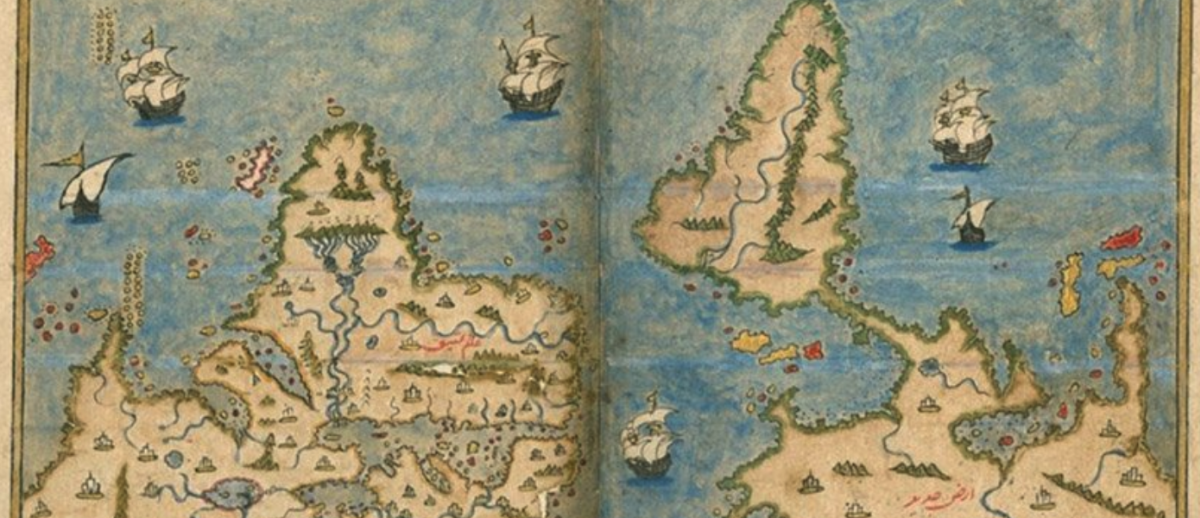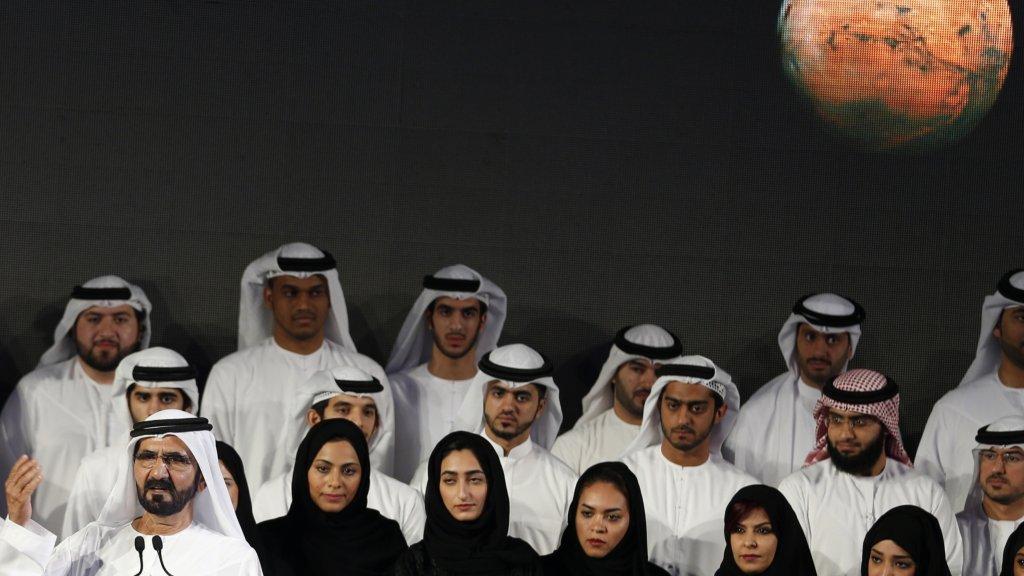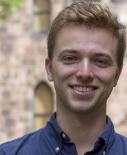Where and When is Progress? On Agency in the History of Science
archive


Map (ca. 1600) from Tarih Hindi Garbi, the 'History of the West Indies', with the southern tip of South America at the top of the image. Printed in Istanbul in 1730.
Where and When is Progress? On Agency in the History of Science
Writing classic histories of science has forced historians to make a temporal and spatial claim about who is and has been worthy of contributing to scientific progress. Ultimately, the history of science is a claim about the legitimacy of people’s power to do science today. By “doing science,” I mean, in the crudest sense, attempts to empirically evidentiate solutions to human generated questions about the world: how to cure cancer? Is the Earth warming? Can we find life in the universe? Answers to these questions come with economic and social power: if you can cure cancer, you can win nine million Swedish Krona and become a “household name”; if you can prove the Earth is warming due to car emissions and excessive meat consumption, you can justify taxing fossil fuel and switching to veganism; if you can find Earth-like planets around distant stars, you can claim prestige for your community and yourself and justify allocating resources for further exploration (to Mars perhaps).
That these three examples of “doing science” appear to be grounded only in the present and not the past is a symptom of how our modern, Western doxa of history and science produces a cleavage between science (the “true” story of nature) and history (the “true” story of humans). Our scientific “here and now,” we could say as good modernists, only needs to imagine each answer to our questions as a step forward from the previous moment—that is, history’s “there and then” seems unimportant in making progress. So why then does history of science still matter? History of science has the potential to create biased narratives of modern progress, narratives which produce historical consciousness that distorts people’s concepts of “where and when” is significant. That is, to understand how people make claims about their agency to do science “here and now,” we have to look at how they tell stories about their “there and then.”1
One of modernity’s symptoms is that it creates ruptures in the past to demonstrate progress. Scholars such as Bruno Latour have demonstrated that modern thought is caught up in historicism: dating, cataloguing, and ordering evidence to show how the present has ruptured at certain moments from the past. The ruptures are ordered to trace a path of either upward progress, or downward regression. The postmodern response to these two paths of history has been to merely reorder modernist’s categories into their own new sets. But this response is insufficient: the framework postmodernists keep—that of distinguishing between “there and then” and “here and now”—still implies that history and the present are separable. Yet, there can be no separation of the history of science from other histories of religion, politics, or culture.2
When taken together, we can see that someone like Isaac Newton was not merely interested in theorizing basic physical principles but was also a tyrant at the helm of the Royal Society and obsessed with alchemy and the apocalypse. In this example, the modern narrative of the history of science only remembers Newton for the rupture produced by his physical principles and ignores the political and religious dimensions of his life because of the modern claim that science does not do politics in the “here and now.” A postmodernist might reintroduce Newton’s non-scientific life, but still keep separate categories for Newton’s philosophy of science from his philosophy of institutional management. The separation of Newton’s life into discrete epistemes is to tell a narrative that imagines the divisions of science from culture to exist in the past. But again, past and present cannot be separated.
...our modern, Western doxa of history and science produces a cleavage between science (the “true” story of nature) and history (the “true” story of humans).
In his book What Time Is It There?, Serge Gruzinski challenges the modern concepts of progress flowing from Western Europe to the rest of the world by showing that concepts of a global space and time were being produced on the “peripheries” of the traditional Western European model. The traditional model implies that only the great colonial powers of Portugal and Spain were interested in mapping the world, documenting different cultures, and asking such questions as “what time is it there?” By questioning how the peripheries of the traditional model—Mexico City and Istanbul in the sixteenth and seventeenth century—played a role in creating the Western European model, Gruzinski shows how globalization and scientific modernity are not diffused, but are created through relationships between centers and peripheries. The Ottomans provided a specter in the East which allowed King Philip II to justify uniting Portugal and Spain as a hegemonic colonial force, and Mexico City provided a source of exoticism which European readers “devoured.”
Gruzinski complicates our understanding of this period by showing that exotic texts were not just a product of colonial hegemony in the metropole: the book Tarih-i Hind-i garbi, published in 1730 Istanbul, imagined New World cities such as Potosi as a fortified mining city (even though it was not) replete with exotic new plants and animals; the book Repertorio de los Tiempos, published in 1606 in Mexico City by Heinrich Martin, described (among many things) the Ottoman Empire “to satisfy the curiosity of readers in New Spain.”3 Curiosity and geographical awareness were not solely a product of Western Europe’s progress. Peripheral, non-colonial, and non-metropole actors had agency in creating their own narratives. What Time is it There? is ultimately about “here and now.” It forces us to address the amnesia caused by the “backwash of globalism,” which blinds our modern selves from seeing how the dominant narrative of producing global consciousness in the sixteenth and seventeen centuries is inherited from the past and occludes other experiences.4 That is, by looking at just the last step of progress which tells us that we live in a globally connected world, we assume that global awareness is unique to “here and now.”
History of science has the potential to create biased narratives of modern progress, narratives which produce historical consciousness that distorts people’s concepts of “where and when” is significant.
Yet distinctions between the history of science and cultural history remain prevalent. Most notably, Lorraine Daston’s article “The History of Science and the History of Knowledge,” argues that history of knowledge differs from the history of science. History of science was developed during the early-to-mid twentieth century in the United States and Western Europe, a period when self-serving, romanticized narratives of Western modernity led people to create a universal narrative based solely on Western figures (Kepler, Copernicus, Galileo, etc.). This narrative’s claim to universality was tenuous as it omitted crucial developments in non-European history, such as scientists in the medieval Islamic world. The history of science, written by Americans and Western Europeans, belonged to American and Western Europeans. Since the 1970s and ‘80s, the history of knowledge has indeed uncovered the gaping blind spots of history of science, allowing the canon of historical subjects to open up beyond the well-rehearsed biographies of figures like Isaac Newton. But to whom, then, does the history of knowledge belong? For Daston, the “mosaic of many exquisitely detailed studies” produced by the democratization of what used to be the history of science only create a tangled web and cannot compete with the more sophisticated history of science.5 The history of knowledge, this argument implies, cannot have an owner. To many dyed-in-the-wool historians of science, it seems that even though the narrative of the history of science is “gravely flawed if not outright false,” expanding the subjects and topics of the history of science is unlikely if not impossible, and attempting to do so “would just worsen the vertigo.”6 This intellectual revanchism takes away a powerful tool for peoples traditionally left out of “modernity” to lay claim to their own progress narrative.

Sheikh Mohammed bin Rashid al-Maktoum (bottom left), Prime Minister of the United Arab Emirates during a ceremony to unveil UAE's Mars Mission on May 6, 2015 in Dubai. (Source: Karim Sahib, AFP)
What, then, do we make of Emirati or Qatari scientists who claim a modern renaissance of their ancient scientific tradition? The solution is not to do away with the history of knowledge and keep the history of science, as Daston advocates, but rather to democratize who can lay claim to the history of science. Astronomers and aerospace engineers from the UAE, who plan on establishing a Mars colony by the year 2117, justify their aspirations by claiming that they are recovering the lost progress of medieval Islamic astronomers.7 By “doing science,” these Emirati scientists not only look at the last step scientists have made in order to build rockets and satellites and to frame their questions; they also create their own history of science, which extends well into the past. The fact that their narrative—from medieval progress, to stagnation, to current renaissance—differs from the Western narrative of science—from medieval regression, to early modern invention, to current superiority—does not mean that either narrative is wrong.8 Differing narratives do not create “vertigo,” because writing the history of science is not about empirically proving a true narrative of science. There is no true history of science with which to stabilize ourselves. Writing the history of science is about staking a claim of agency in one’s own progress “here and now.”
1. James Delbourgo, “The Knowing World: A New Global History of Science,” History of Science (2019).
2. Bruno Latour, We Have Never Been Modern, trans. Catherine Porter (Cambridge: Harvard University Press, 1993), 10 and 74.
3. Serge Gruzinski, What Time is it There? America and Islam at the Dawn of Modern Times, trans. Jean Birrell (Cambridge: Polity, 2010), 10 and 16.
4. Gruzinski, What Time is it There?, 15.
5. Lorraine Daston, “The History of Science & the History of Knowledge,” KNOW 1 (2017): 135-137 and 145.
6. Daston, 149 and 150.
7. “UAE announces build first city on Mars by 2117,” on YouTube https://www.youtube.com/watch?v=e44yzxJbrm0
8. See also Jörg Matthias Determann’s Space Science and the Arab World: Astronauts, Observatories and Nationalism in the Modern Middle East, (London: I.B. Tauris, 2018), chaps. 4-5.
Daston, Lorraine. “The History of Science & the History of Knowledge.” KNOW 1 (2017): 131-154.
Delbourgo, James. “The Knowing World: A New Global History of Science.” History of Science (2019).
Determann, Jörg Matthias. Space Science and the Arab World: Astronauts, Observatories and Nationalism in the Modern Middle East. London: I.B. Tauris, 2018.
Gruzinski, Serge. What Time is it There? America and Islam at the Dawn of Modern Times. Translated by Jean Birrell. Cambridge: Polity, 2010.
Latour, Bruno. We Have Never Been Modern. Translated by Catherine Porter. Cambridge: Harvard University Press, 1993.
“UAE announces build first city on Mars by 2117.” https://www.youtube.com/watch?v=e44yzxJbrm0 .



